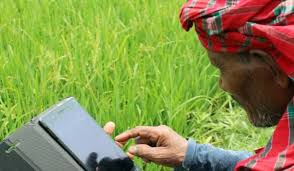- আমাদের সম্পর্কে
-
আমাদের সেবা
ডাউনলোড
প্রশিক্ষণ ও পরামর্শ
-
অন্যান্য কার্যালয়
বিভাগীয়/ উপজেলা কার্যালয়
মন্ত্রণালয়/বিভাগ ও অধিদপ্তর
- ই-সেবা
- গ্যালারি
-
যোগাযোগ
যোগাযোগ ম্যাপ
- মতামত
মেনু নির্বাচন করুন
- আমাদের সম্পর্কে
-
আমাদের সেবা
ডাউনলোড
প্রশিক্ষণ ও পরামর্শ
-
অন্যান্য কার্যালয়
বিভাগীয়/ উপজেলা কার্যালয়
মন্ত্রণালয়/বিভাগ ও অধিদপ্তর
- ই-সেবা
-
গ্যালারি
Photo gallery
ভিডিও গ্যালারি
-
যোগাযোগ
অফিস যোগাযোগ
যোগাযোগ ম্যাপ
-
মতামত
মতামত ও পরামর্শ
Main Comtent Skiped
At a Glance
It is not known where or when the first extension activities took place. But it is known, however that Chinese officials were creating agricultural policies, documenting practical knowledge, and disseminating advice to farmers at least 2000 years ago. For example in approximately 800 BC, the minister responsible for agriculture under one of the Zhou dynasty emperors organized the teaching of crop rotation and drainage to farmers. The minister also leased equipments to farmer, built grain stores and supplied free food during times of famine. The birth of smodern extension service has been attributed to the events that took place in Ireland in the middle of the 19th century. Between the years 1845-51 the Irish potato crop was destroyed by fungal disease and a severe famine occurred. The British government arranged for Practical Instructors to travel to rural areas and teach small farmers how to cultivate alternative crops. This scheme drew the attention of government officials in Germany, who organized their own system of travelling instructors. By the end of 19th century the idea had spread to Denmark, Netherland, Italy, and France.
In the year between 1862 -65 our country had to face a severe famine. Government formed a famine commission. This commission first advocated forming an Agriculture Department. Consequently in 1870 the agriculture department was formed as a revenue department. In 1960 a separate Agriculture Department was established. At that time an agriculture farm covering 1000 acres of land was set up at Monipur area of Dhaka city ( present Jatyo Sangshad area). This agriculture farm was attached to the Agriculture Department. For conducting agriculture research a laboratory was established in the year 1909. In 1914 Government employed an Agriculture Extension Officer in each district. Their academic background was not agriculture. In 1943 agriculture graduates were appointed to the agriculture department. In 1950 the then East Pakistan government initiated the extension and development program among the farmers through the VAID project. Government established Plant Protection Wing (1956), Bangladesh Agriculture Development Corporation (1961), Agriculture Information Center (1962), DAEM and DARI (1970). After the independence of Bangladesh government took initiatives to strengthen agriculture extension program and established cotton development board, tobacco development board, horticulture board. In 1975 agriculture directorate (Extension and Management) and Jute directorate were established. In 1982 Six agencies responsible for technology transfer DAE (E and M), DA( jp), plant protection directorate, horticulture board, tobacco development board and central extension resource and development institute (CERDI) were merged to form the present Agriculture Extension Department (DAE). From 1977 to 1990 the DAE conducted the agriculture extension activities under the concept of Training & Visit (T&V) approach. But since 1990 the agriculture extension programs have been going on successfully under the concept of group approach. In 1996 government adopted the New Agriculture Extension Policy (NAEP) to conduct a well planned Agriculture Extension Service in Bangladesh. The Department of Agricultural Extension’s mission is to provide efficient and effective needs based extension services to all categories of farmer, to enable them to optimize their use of resources, in order to promote sustainable agricultural and socio-economic development.

Site was last updated:
2025-05-15 11:57:46
Planning and Implementation: Cabinet Division, A2I, BCC, DoICT and BASIS















